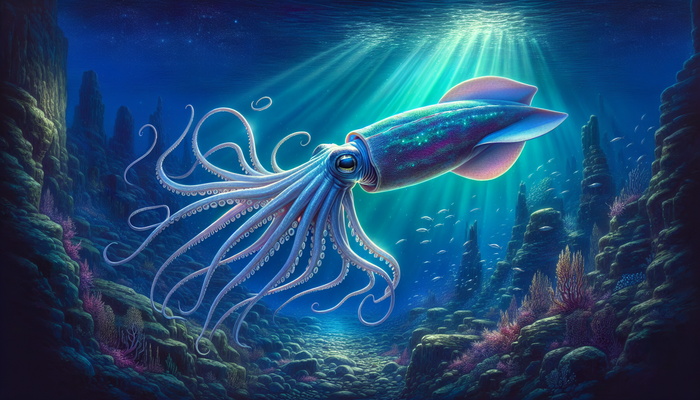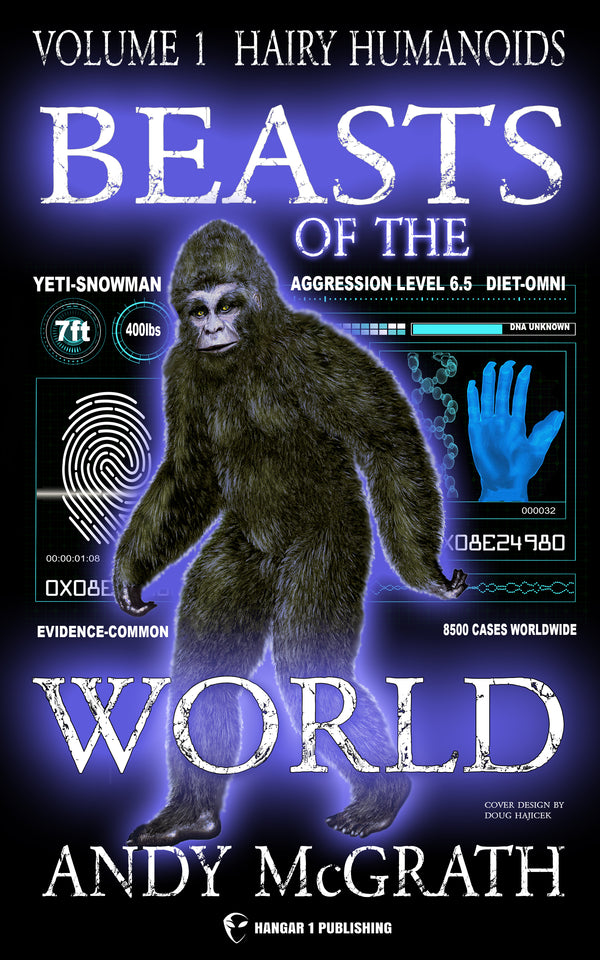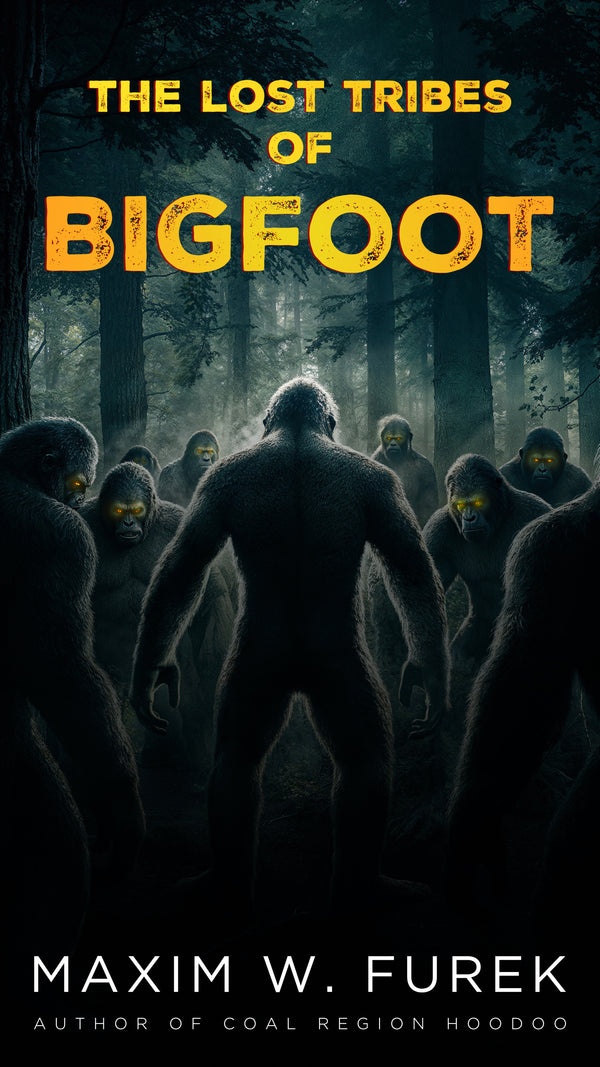The Bone-Chilling Truth Behind Russia's Killer Yeti

By Lucas Jennings, Cryptozoologist and Adventurous Naturalist
Deep in the untamed wilderness of Russia, whispers of a terrifying creature have echoed through the centuries. The Russian yeti, a towering, ape-like beast said to roam the remote forests and mountains, has captured the imagination of locals and researchers alike. As a cryptozoologist and adventurer, I've long been fascinated by this enduring mystery and the chilling mysteries surrounding it. Join me as we delve into the bone-chilling truth behind Russia's killer yeti and unravel the secrets of this menacing enigma.
The Legend Unfolds: Ancient Tales of the Menk
The origins of the Russian yeti legend can be traced back to the indigenous Mansi people, who have inhabited the Ural Mountains for generations. In their folklore, they speak of the Menk, a hairy, wild man of the mountains. These ancient tales paint a picture of a fearsome creature, known for its ferocity and disturbing habit of ripping out its victims' tongues. The Menk's description bears a striking resemblance to other cryptids, such as the Himalayan Yeti and the North American Bigfoot or Sasquatch. These creatures share common characteristics – they are typically described as large, bipedal, ape-like beings covered in hair.
The vast, untamed forests and treacherous mountain ranges of Russia provide the perfect habitat for a creature like the yeti to remain hidden from human eyes. The remote wilderness areas, particularly in the Ural Mountains and Siberia, have long been shrouded in mystery, fueling speculation about what might lurk in their depths.
The Dyatlov Pass Incident: A Chilling Enigma
Perhaps no event has fueled the Russian yeti legend more than the infamous Dyatlov Pass incident. In 1959, a group of nine experienced ski hikers met a tragic and mysterious end in the Ural Mountains. Their bodies were found scattered around their campsite on Kholat Syakhl, a name that ominously translates to "Dead Mountain" in the local Mansi language.
The scene that greeted the search party was as bizarre as it was horrifying. The hikers' tent had been cut open from the inside, and the group had fled into the freezing night, some of them barefoot or only partially dressed. The bodies showed signs of severe injuries that were inconsistent with a natural disaster or animal attack. Some had fractured skulls and chests, others had missing eyes and tongues. There were no signs of a struggle or any other human presence at the site.
Investigators were baffled. What could have caused these experienced hikers to flee their tent in such a panic, only to succumb to the elements and sustain such grievous injuries? As the mystery deepened, some began to speculate about a possible connection to the Russian yeti.
A tantalizing clue emerged from the hikers' diaries. An entry mentioned "snowmen" in the area, hinting at a possible encounter with an unknown creature. Even more intriguing was a blurry photograph recovered from the scene, which allegedly showed a humanoid figure lurking in the forest. Could the Dyatlov Pass hikers have fallen victim to a yeti attack?
The Hunt for Evidence: Expeditions and Theories
The Dyatlov Pass incident ignited a renewed interest in the Russian yeti, spurring researchers and adventurers to launch expeditions into the Siberian wilderness in search of evidence. One of the most prominent figures in this quest was Boris Porshnev, a Soviet historian and anthropologist who proposed a groundbreaking theory in the 1950s.
Porshnev suggested that the yeti could be a relic hominid population, a surviving branch of our ancient human family tree that had adapted to life in the harsh Siberian landscape. He believed that the creature, which he referred to as the Almasty, could be a Neanderthal or another archaic human species that had managed to evade extinction.
To support his theory, Porshnev organized expeditions to the Pamirs Mountains, where he gathered eyewitness reports from local villagers and hunters who claimed to have encountered the Almasty. Other researchers followed in his footsteps, including Dmitri Bayanov, Igor Burtsev, and Marie-Jeanne Koffmann. They collected footprint casts, alleged hair samples, and compiled extensive databases of eyewitness accounts.
Yet despite these tantalizing clues, definitive proof of the Russian yeti remained elusive. Skeptics argued that the evidence was inconclusive, and that alleged yeti sightings could be attributed to misidentifications of known animals, such as bears or wolves, or even deliberate hoaxes staged for publicity or to boost tourism in the region.
Theories and Speculations: Unraveling the Mystery
As researchers continued to investigate the Russian yeti, various theories emerged to explain the creature's origins and the Dyatlov Pass incident. Some, like Porshnev, advocated for the surviving hominid hypothesis, suggesting that the yeti could be a relict population of Neanderthals, Denisovans, or Homo erectus that had adapted to the harsh Siberian wilderness and managed to evade detection.
Others proposed more mundane explanations, such as misidentifications of known animals or elaborate hoaxes. The remote wilderness areas of Russia, after all, are home to a variety of large predators, including bears and wolves. In some cases, feral humans living in the wild have been mistaken for yetis or other cryptids.
There are also those who venture into the realm of the paranormal, suggesting that the yeti could be a spiritual or interdimensional being, rather than a flesh-and-blood creature. Some even draw connections between yeti sightings and UFO activity in the region, weaving a complex tapestry of mystery and speculation.
When it comes to the Dyatlov Pass incident, alternative explanations abound. Some researchers point to natural phenomena, such as an avalanche or a sudden slab slide, that could have forced the hikers from their tent. The victims' bizarre injuries and the state of undress in which some were found could be attributed to paradoxical undressing, a phenomenon associated with hypothermia that leads to erratic behavior.
Others suggest a more sinister scenario involving military experiments or weapons testing gone awry. The proximity of the Dyatlov Pass to secret Soviet military installations has fueled conspiracy theories about a government cover-up. Some even speculate about a possible confrontation between the hikers and the indigenous Mansi people, perhaps over trespassing on sacred lands or a shamanic ritual that took a deadly turn.
The Enduring Allure of the Russian Yeti
Despite the lack of conclusive evidence, the Russian yeti continues to capture the imagination of people around the world. The creature has become a staple of pop culture, featured in countless books, films, and television shows. Documentaries like "Expedition Bigfoot" and "Russian Yeti: The Killer Lives" have reignited interest in the legend, while fictional portrayals in horror and science fiction media have cemented the yeti's place in the pantheon of cryptozoological icons.
The Dyatlov Pass and the surrounding Siberian wilderness have become destinations for adventurers, researchers, and cryptotourism enthusiasts seeking to unravel the mystery for themselves. The allure of the unknown, the thrill of the hunt, and the enduring fascination with the idea of undiscovered creatures living in the wild continue to draw people to these remote and unforgiving landscapes.
At its core, the Russian yeti legend speaks to something deep within the human psyche – our primal fear of the unknown, our longing for mystery and wonder in an increasingly explored and explained world. The yeti serves as a symbol of the untamed wilderness, a reminder of the secrets that still lurk in the shadows beyond the reach of modern science and technology.
The Scientific Perspective: Separating Fact from Fiction
As compelling as the Russian yeti legend may be, it is essential to approach the subject with a critical and scientific mindset. When examining the evidence – or lack thereof – for the creature's existence, several key points emerge.
First and foremost is the absence of concrete physical proof. Despite decades of searching, no one has managed to produce a body, bones, or clear photographic or video evidence of the yeti. DNA analysis of alleged hair and tissue samples has been inconclusive at best, with most turning out to be from known animals or even humans.
From an ecological and biological standpoint, the idea of a large, undiscovered hominid species living in the Siberian wilderness raises several red flags. The harsh environment and limited food sources would make it difficult for such a creature to sustain a viable breeding population without leaving more obvious traces of its presence.
Moreover, the lack of fossil evidence for a recent hominid species in the region poses a challenge to the surviving relic hypothesis. While it is true that the vast Siberian landscape has not been fully explored or excavated, the complete absence of any transitional forms or skeletal remains is troubling.
As the old scientific adage goes, extraordinary claims require extraordinary evidence. The burden of proof lies with those who claim the yeti's existence, and so far, the evidence has fallen short of the mark. Occam's Razor – the principle that the simplest explanation is often the most likely – suggests that misidentifications, hoaxes, and natural phenomena are more probable than an undiscovered hominid species.
The Power of Folklore and the Search for Meaning
Yet for all the scientific skepticism, there is no denying the power and persistence of the Russian yeti legend. Like all great folklore and mythology, it speaks to something deep and primal within us – the fear of the unknown, the longing for mystery and wonder, the desire to believe in something beyond the mundane.
In many ways, the yeti serves as an embodiment of the untamed wilderness, a symbol of the raw power and majesty of nature. It is a reminder that, for all our technological advancements and scientific understanding, there are still vast realms of the world that remain unexplored and unexplained.
The legend also serves as a cautionary tale, a warning against the hubris of assuming we have mastered and tamed the natural world. In the stories of the Menk and the Dyatlov Pass incident, we see the consequences of venturing too far into the domain of the wild, of disrespecting the forces that lie beyond our control.
At the same time, the enduring fascination with the yeti and other cryptids speaks to a deep human need for mystery and the unknown. In a world increasingly mapped, measured, and quantified, the idea of an undiscovered creature lurking in the shadows offers a tantalizing escape from the mundane, a glimpse of something extraordinary and untamed.
Ultimately, the search for the Russian yeti is as much about the journey as the destination. It is about the thrill of the hunt, the excitement of pursuing a mystery, and the willingness to keep an open mind in the face of the unknown. Whether or not the creature actually exists is almost secondary to the value of the quest itself – the opportunity to push the boundaries of our understanding, to challenge our assumptions, and to marvel at the wonders that still lurk in the wild places of the world.
The Future of the Hunt: New Frontiers and Possibilities
As we look to the future of the Russian yeti legend, there are reasons for both skepticism and optimism. On one hand, the lack of concrete evidence after decades of searching suggests that the creature may indeed be nothing more than a myth, a product of misidentification, hoaxes, and the human imagination.
Yet as long as there are vast, unexplored regions of the world, there will always be the possibility of new discoveries and surprises. Advances in technology, from DNA analysis and genetic sequencing to remote sensing and thermal imaging, offer new tools for researchers seeking to unravel the mysteries of the natural world.
Moreover, the value of traditional knowledge and folklore should not be discounted. By working closely with indigenous communities, such as the Mansi people, researchers can gain valuable insights into the creatures and phenomena that have long been a part of their cultural heritage. Combining scientific methods with traditional ecological knowledge may yield new avenues for investigation and understanding.
If the Russian yeti were to be discovered, the implications would be profound. It would represent a major scientific breakthrough, reshaping our understanding of human evolution and the history of life on Earth. The creature's habitat would become a focal point for conservation efforts, as scientists and environmentalists sought to protect this rare and elusive species.
But even if the yeti remains a mystery, its legend will endure as a testament to the power of human imagination and our enduring fascination with the unknown. In a world that can sometimes feel too small and too familiar, the idea of a wild, untamed creature roaming the remote corners of the Earth offers a glimmer of hope and wonder, a reminder that there are still mysteries waiting to be unraveled.
Embracing the Mystery
In the end, the Russian yeti legend is a reminder of the incredible diversity and complexity of the natural world, and of the many mysteries that still lie waiting to be discovered. Whether the creature is a flesh-and-blood animal, a product of folklore and mythology, or something in between, its enduring presence in the human imagination speaks to the power of mystery and the unknown.
As we continue to explore the wild places of the Earth, let us do so with a sense of humility and wonder, recognizing that there is still so much we have yet to learn and understand. Let us approach the search for the yeti and other cryptids with a healthy mix of skepticism and open-mindedness, willing to follow the evidence wherever it may lead, but also willing to embrace the mystery and the magic of the journey itself.
For in the end, perhaps the true value of the Russian yeti legend lies not in whether or not the creature actually exists, but in the way it challenges us to question our assumptions, to push the boundaries of our understanding, and to never stop marveling at the incredible wonders that still lurk in the shadows of the world.
So let us venture forth into the wild, into the realm of the yeti and the unknown, armed with curiosity, courage, and a willingness to embrace the mystery. Who knows what we may find out there, in the vast, untamed wilderness of the Russian landscape? But one thing is certain – the search itself is a journey worth taking, a reminder of the incredible beauty, diversity, and mystery of the natural world we call home.



























